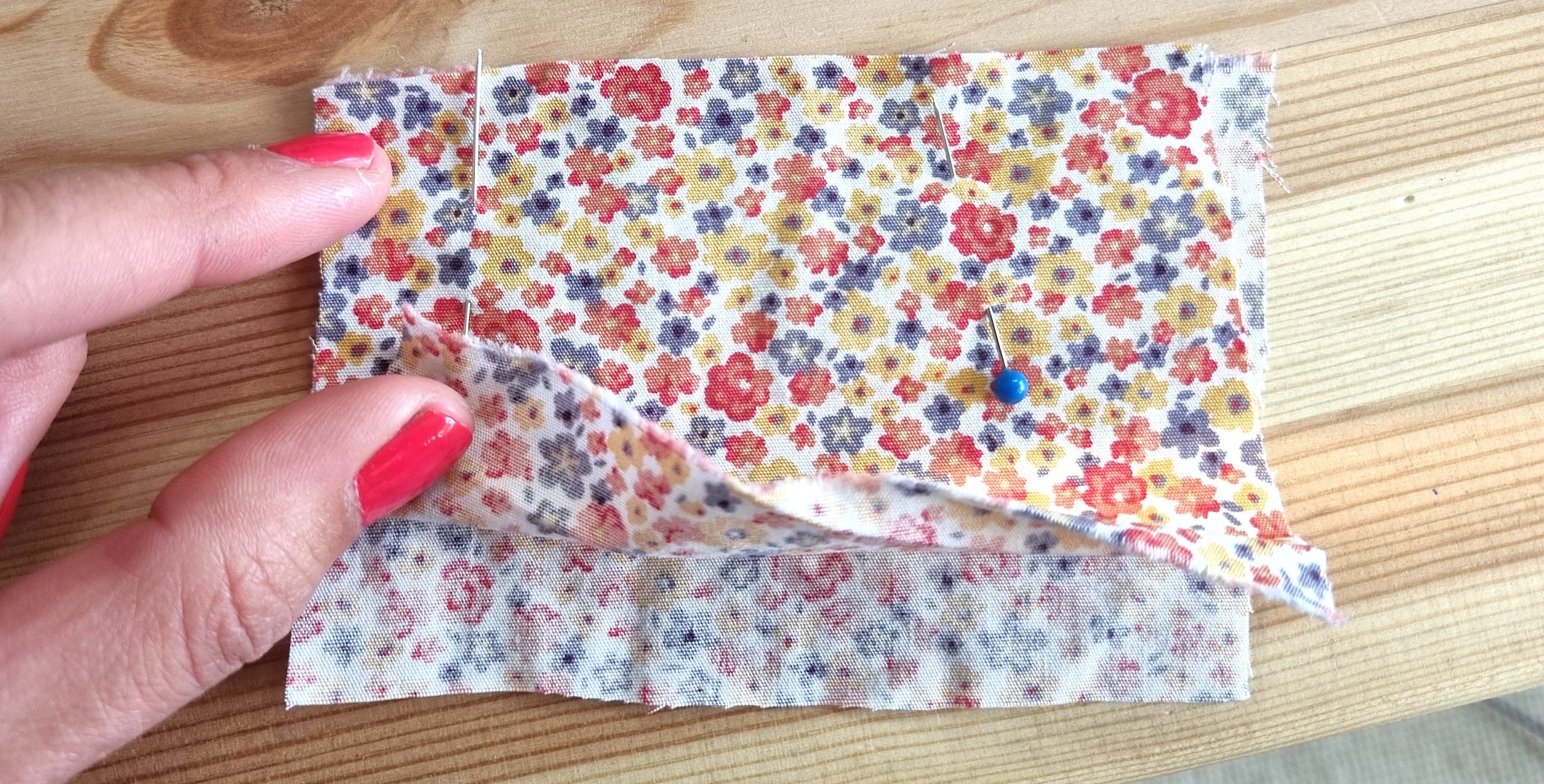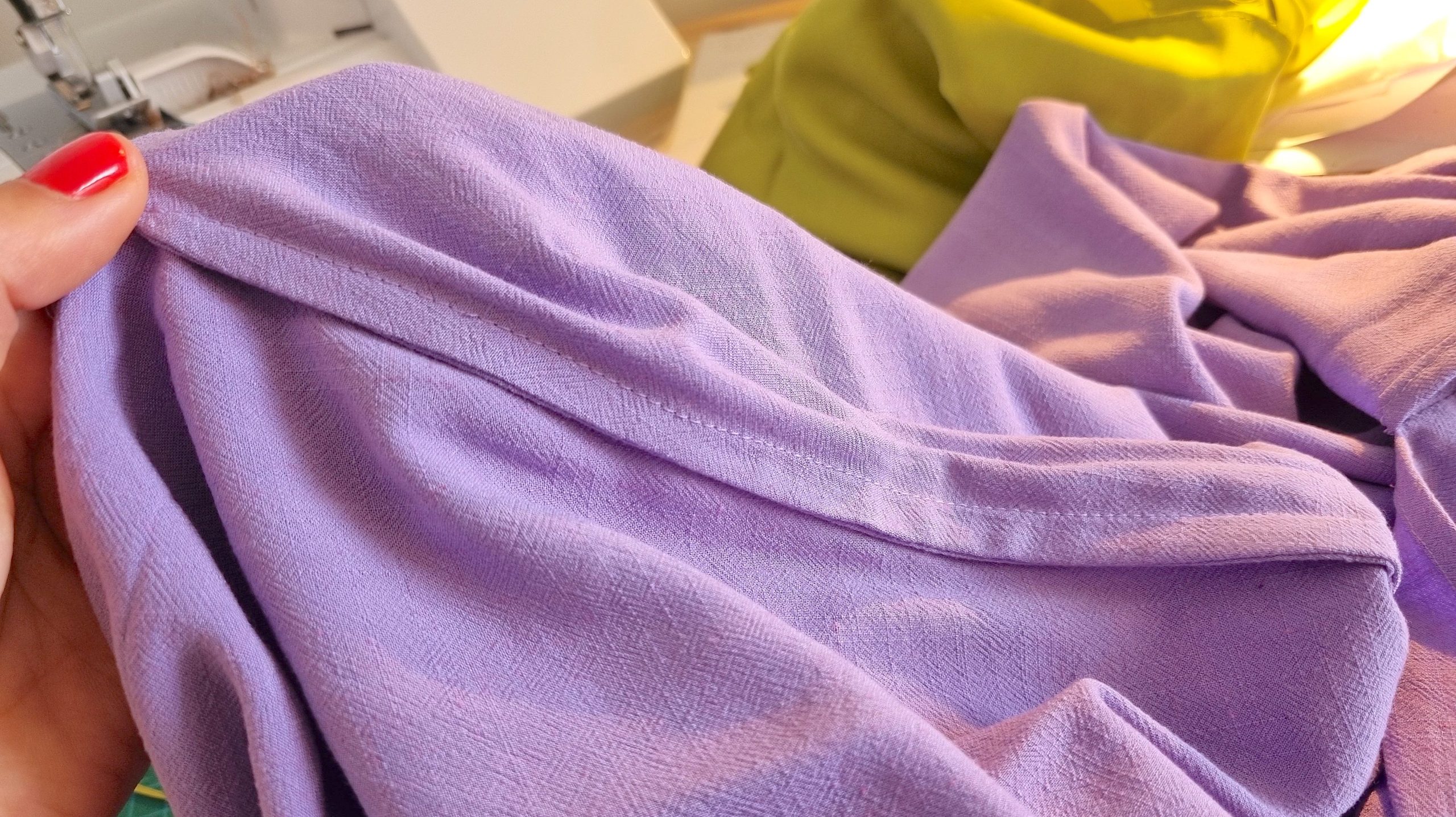We’re really enjoying the new series of The Great British Sewing Bee, and can’t wait for tonight’s episode!
Inspired by the Bee to get sewing, or try out some of the skills you see in the show?
We’re going to be covering each episode here at WG: Studio, and having fun using some of the sewing techniques the sewists face in the challenges.

The first challenge of last week’s episode featured french seams, so I thought it might be useful to do a little intro into what they are, and share some tips that I find helpful.
For those who don’t know, french seams are are a lovely, neat way of finishing the seams of your garment. They completely encase the raw edge, and give that extra luxurious finish to your makes! I really like using them for drapey garments like bias-cut dresses and silk shirts – but you can use them whenever you like.

How to sew a french seam
I think french seams look trickier than they are. It’s largely about taking your time to understand what you’re doing, and good fabric/seam prep. The main difference with a regular seam is that the raw edge is encased within the seam, and you sew twice. I’ll explain..
Step 1 – identify your right and wrong sides
Some fabric has a clear right side (the side that will face out when you wear it) and wrong side (side that will be on the inside of your make). This makes it easier, but if your fabric doesn’t it can help to mark it with chalk or a dissolvable marker.
This is important because we sew two seam lines and begin sewing on the opposite side to how we would in a normal seam.
Step 2 – lay your pieces WRONG SIDES together
 Normally when we sew a seam, we sew with right sides facing. We start with wrong sides facing each other in french seams, because the next step will be to turn it over for the second seam line.
Normally when we sew a seam, we sew with right sides facing. We start with wrong sides facing each other in french seams, because the next step will be to turn it over for the second seam line.
Lay your pieces wrong side together and pin them in place.
Step 3 – sew a 3/8″ seam allowance (SA)
 It doesn’t have to be 3/8″, but your two seam allowances from the two seams you’ll sew need to add up to the pattern’s seam allowance (this is often 5/8″). It’s important to sew the bigger SA first, so that the second one is smaller – 2/8″, e.g. 1/4″. It’ll look neater this way, and will allow you to ease your french seam around any curves.
It doesn’t have to be 3/8″, but your two seam allowances from the two seams you’ll sew need to add up to the pattern’s seam allowance (this is often 5/8″). It’s important to sew the bigger SA first, so that the second one is smaller – 2/8″, e.g. 1/4″. It’ll look neater this way, and will allow you to ease your french seam around any curves.
Step 4 – trim your SA close to the seam line
 This is where some sewists came unstuck in the bee – if the seam allowance isn’t trimmed enough you’ll see frayed bits of fabric poking through your second (final) seam.
This is where some sewists came unstuck in the bee – if the seam allowance isn’t trimmed enough you’ll see frayed bits of fabric poking through your second (final) seam.
Trim off the excess, so you’re left with a tiny SA. Be very careful not to clip the stitching, or go too close so that the fabric pulls away from the seam.
Step 5 – turn inside out and press your seam
 Don’t skip pressing here, it’ll help make your seam neat!
Don’t skip pressing here, it’ll help make your seam neat!
Step 6 – sew your second seam
RIGHT SIDES are now facing, as they would be in a normal seam. Sew your second seam line 1/4″ away from the edge. You hopefully won’t catch the seam allowance from your first seam if you trimmed it down enough.
By sewing this second seam, you completely encase your first seam and raw edge!

The outside should look like this when you’re done, and the inside will have a smooth french seam.

Turn out, press and enjoy!
You’re all done. I hope that was useful. There are just a couple of things that you need to remember for neat french seams, but they’re really lovely when they work out.
Enjoy the next episode of the Sewing Bee!
Lorna x






 We’re thrilled to announce that we’ve partnered with Tree Nation, the platform to reforest the world & fight climate change! Home to over 90 planting projects in 33 countries, Tree Nation is a non-profit organisation that helps people & companies offset their CO2 emissions.
We’re thrilled to announce that we’ve partnered with Tree Nation, the platform to reforest the world & fight climate change! Home to over 90 planting projects in 33 countries, Tree Nation is a non-profit organisation that helps people & companies offset their CO2 emissions.